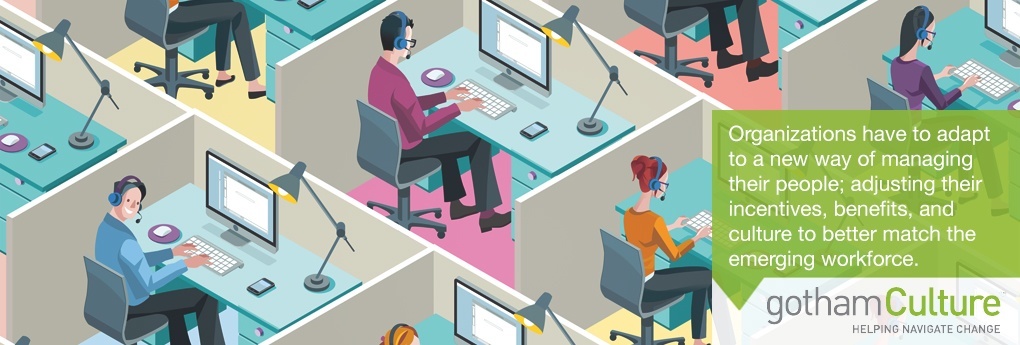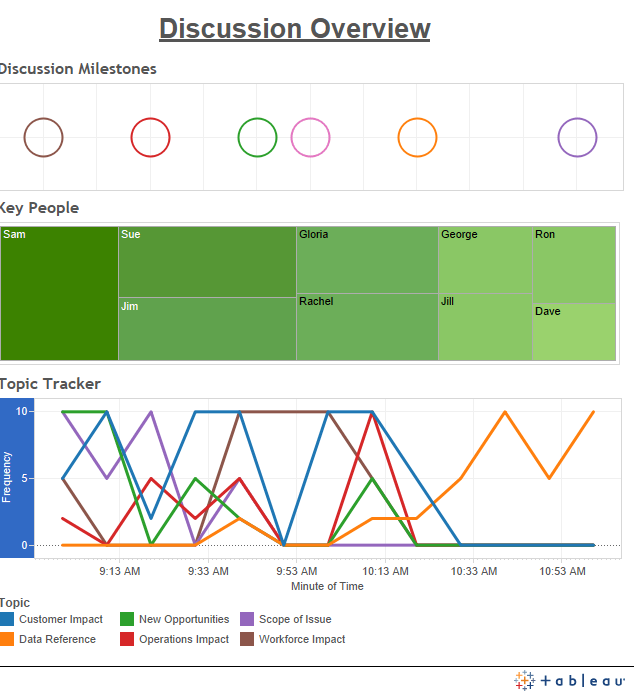As a leader, your title alone might lead you to falsely believe that you have all the answers. After all, others have entrusted you to direct the company, right?
In reality, no one person in a complex organization can ever see the entire picture, and when leaders default to making ill-informed decisions, they slowly etch away at dismal employee satisfaction levels. In fact, a recent survey by TINYhr found that 79 percent of employees feel marginally valued or extremely undervalued at work.
By crowdsourcing decisions in your organization, you can leverage the input, ideas, and diverse thinking of others to make healthier choices. And when both customers and employees are actively engaged, organizations experience a 240 percent rise in performance-related business outcomes, according to Gallup’s State of the American Workforce report.
This year, I’ve made a commitment to crowdsource more of my company’s decisions. And there are plenty of reasons you should, too.
1. You overcome bias. Crowdsourcing prevents groupthink and stops leaders from buying in to their own ideas without thinking through other perspectives. By bouncing ideas off others in your organization, you can stay true to company goals and focus on broader objectives.
2. It invites better ideas. Those closest to an issue often have the best ideas for fixing it. And while most of them want to contribute to company decisions, they often don’t feel comfortable inserting themselves or know where to start. Actively involving employees, customers, and vendors in the conversation will drive better decision-making and make everyone feel connected to your company.
3. It enhances company culture. Crowdsourcing changes a leader’s role from the all-knowing seer who sends commands down the line to an approachable colleague with a robust understanding of complicated situations. This sends a message to employees that what they think matters. It encourages buy-in and creates an environment where everyone’s voice is welcome. And for companies that want to secure top Millennial talent, fostering an open and collaborative environment is a must.
4. You can meet diverse needs. Different demographic groups interact with your brand in unique ways. By crowdsourcing your decisions, you can confidently meet all of your employees’ diverse needs and avoid focusing on the expectations of a single group. This also allows you to engage stakeholders on an ongoing basis, keeping your finger on the pulse of your customers and employees.
How to Start Crowdsourcing Decisions
When you implement crowdsourcing, it’s easy to get in too deep, too quickly. Instead of jumping in with both feet, keep things simple as you try this process on for size. Experiment with methods and tech for collecting information and keeping track of it.
In our company, we start with internal “think tanks.” When we face complex problems, we bring everyone in our company together to discuss, debate, and develop options to solve them. These think tanks allow us to consider everyone’s input, but they require pulling people out of their daily tasks, so we have to use them sparingly.
With modern technology, you can quickly and easily connect with stakeholders around the world, collect and share ideas through data, and discover the most effective solutions to problems. We’re experimenting with a new software platform that lets us launch live feedback opportunities for our stakeholders so we can access input in the middle of strategic planning processes. It helps us understand which processes we need to prioritize and how to improve them.
To capitalize on the benefits of crowdsourcing, you need to lay a foundation of trust. Openly welcome input and feedback, and don’t be too quick to shoot down any idea. If you’re overly critical or unsupportive, employees will hesitate to contribute their ideas in the future.
The people affected by your decisions have a vested interest in the direction of your company. When you leverage the collective mindset of an entire organization, you ensure that everyone’s input has a meaningful impact on your choices. The possibilities are truly endless.
This article originally appeared on Forbes




 There’s no one-size fits all solution to increase “employee engagement.” It’s crucial to take stock of what your organizational values are, what you want your “Employer Branding” to be and how it aligns with your external brand. Then, think about what kind of talent you want to attract and how you can do that in the competitive marketplace you’re in.
There’s no one-size fits all solution to increase “employee engagement.” It’s crucial to take stock of what your organizational values are, what you want your “Employer Branding” to be and how it aligns with your external brand. Then, think about what kind of talent you want to attract and how you can do that in the competitive marketplace you’re in. Engagement from employees first starts with Leadership defining and embodying a culture of camaraderie about and around what the firm stands for and how things get done. We at gothamCulture focus on commitment, integrity and maniacal pursuit of excellence. You can feel it and see it in how the Partners speak to clients, how project scope and product/service quality is assessed, and in the high performance expectations set upon each member of the firm, at every level, from Intern to Sr. Associate to Partner.
Engagement from employees first starts with Leadership defining and embodying a culture of camaraderie about and around what the firm stands for and how things get done. We at gothamCulture focus on commitment, integrity and maniacal pursuit of excellence. You can feel it and see it in how the Partners speak to clients, how project scope and product/service quality is assessed, and in the high performance expectations set upon each member of the firm, at every level, from Intern to Sr. Associate to Partner. There’s value in a lot of smaller, non-financial benefits that add up to the overall culture of caring about employees. Focus on dollars and pretty soon that’s all your employees will care about.
There’s value in a lot of smaller, non-financial benefits that add up to the overall culture of caring about employees. Focus on dollars and pretty soon that’s all your employees will care about.







